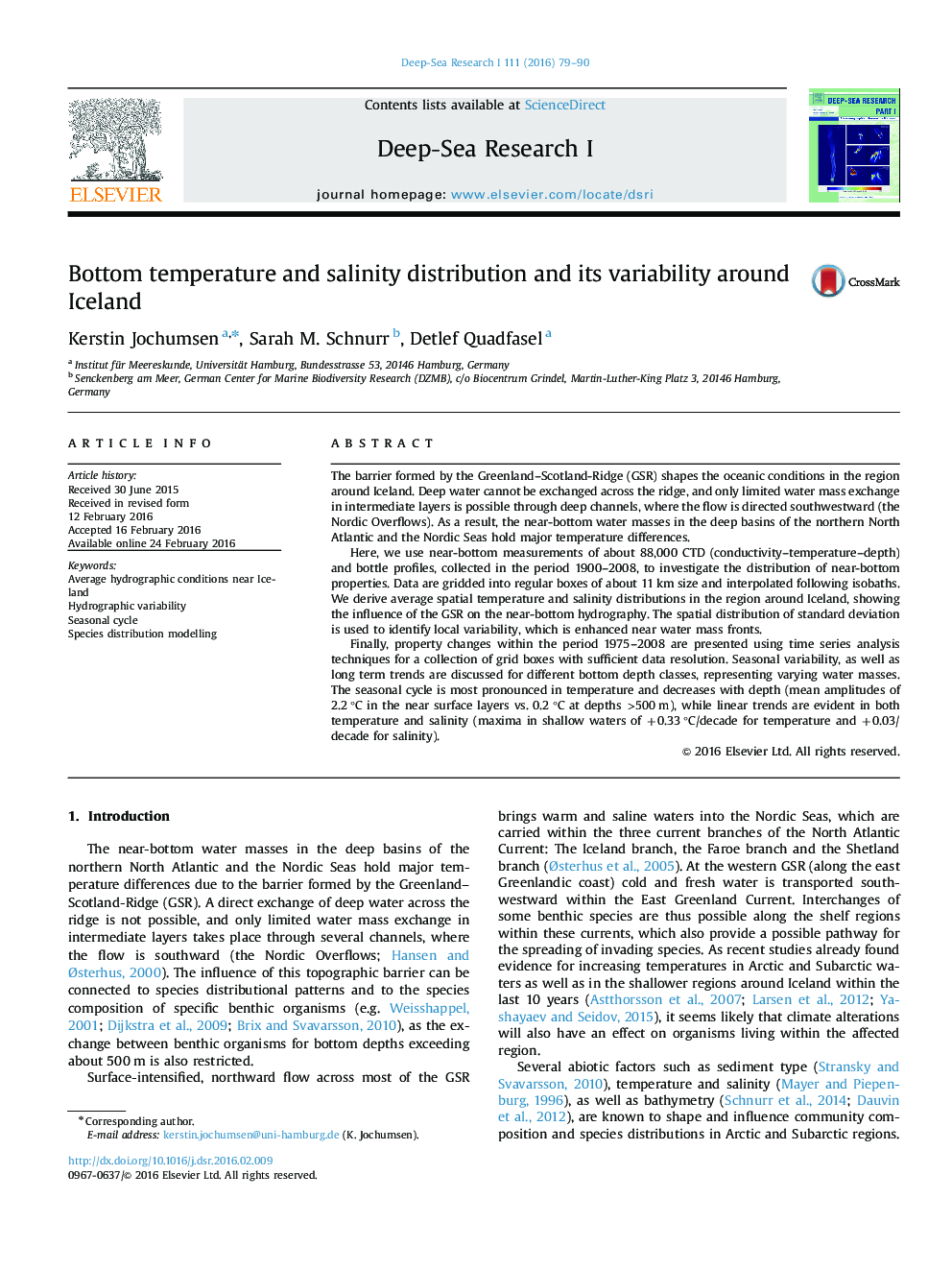| کد مقاله | کد نشریه | سال انتشار | مقاله انگلیسی | نسخه تمام متن |
|---|---|---|---|---|
| 4534441 | 1626319 | 2016 | 12 صفحه PDF | دانلود رایگان |
• Temperature/salinity distributions are derived from 88,000 near-bottom measurements.
• Variability is enhanced near water mass fronts and at shallow depths.
• Linear trends are evident in both temperature and salinity.
The barrier formed by the Greenland–Scotland-Ridge (GSR) shapes the oceanic conditions in the region around Iceland. Deep water cannot be exchanged across the ridge, and only limited water mass exchange in intermediate layers is possible through deep channels, where the flow is directed southwestward (the Nordic Overflows). As a result, the near-bottom water masses in the deep basins of the northern North Atlantic and the Nordic Seas hold major temperature differences.Here, we use near-bottom measurements of about 88,000 CTD (conductivity–temperature–depth) and bottle profiles, collected in the period 1900–2008, to investigate the distribution of near-bottom properties. Data are gridded into regular boxes of about 11 km size and interpolated following isobaths. We derive average spatial temperature and salinity distributions in the region around Iceland, showing the influence of the GSR on the near-bottom hydrography. The spatial distribution of standard deviation is used to identify local variability, which is enhanced near water mass fronts.Finally, property changes within the period 1975–2008 are presented using time series analysis techniques for a collection of grid boxes with sufficient data resolution. Seasonal variability, as well as long term trends are discussed for different bottom depth classes, representing varying water masses. The seasonal cycle is most pronounced in temperature and decreases with depth (mean amplitudes of 2.2 °C in the near surface layers vs. 0.2 °C at depths >500m), while linear trends are evident in both temperature and salinity (maxima in shallow waters of +0.33 °C/decade for temperature and +0.03/decade for salinity).
Journal: Deep Sea Research Part I: Oceanographic Research Papers - Volume 111, May 2016, Pages 79–90
